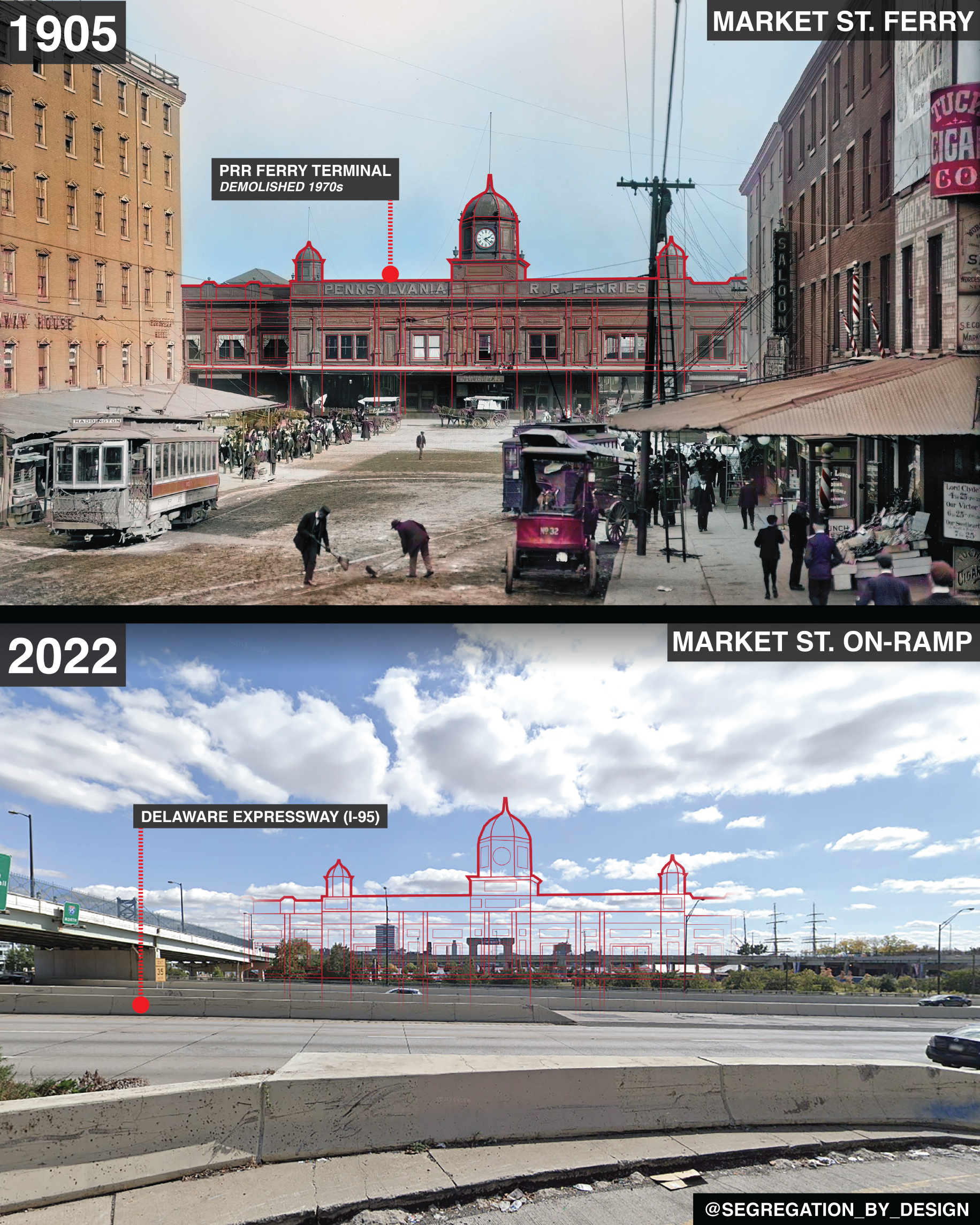PHILADELPHIA: DELAWARE EXPRESSWAY
Construction of the Delaware Expressway (I-95) required the demolition of thousands of buildings, including homes, businesses, places of worship, schools, and more. The majority of these buildings were in the redlined, largely African-American and immigrant neighborhoods along the formerly industrial waterfront. In the neighborhood of Southwark alone, 2,000 row houses were demolished.
In the 1960s and 70s, the decline of the working waterfront due to urban de-industrialization (and other factors, such as containerization, as well as a disinvestment in regional shipping in favor of trucking) had resulted in the loss of tens of thousands of jobs for residents of the waterfront neighborhoods. In the eyes of planners such as Edmund Bacon, the executive director of the Philadelphia City Planning Commission (known as “the Father of Modern Philadelphia,” as well as being the actual father of @kevinbacon), these neighborhoods had become “obsolete.” Under Bacon’s plans, the historic waterfront of Philadelphia was swept away, along with thousands of residents.
When the waterfront had been active (before the 1950s), workers of all ethnicities had clustered in the riverfront neighborhoods, working the many industrial jobs. As much due to their industrial nature as due to their racially-integrated nature, the entirety of the waterfront was redlined, officially deemed “hazardous for investment.” Ultimately redlining is a self-fulfilling prophecy, artificially lowering the value of the land. Later, in the 1960s when the highwaymen such as Bacon came along, they were able to claim economic prudence when building through the redlined communities of color.
The Delaware Expressway continues to act as a massive physical barrier between the city and its waterfront, with only a limited number of connections. Moreover, the expressway pollutes the surrounding neighborhoods with exhaust and particulate matter, as well as noise.
Forming only one part of I-95, much of the traffic the road carries is regional truck freight, passing through Philadelphia without stopping. Because of disinvestment in rail and maritime freight in the second half of the 20th century in favor of trucking, I-95 has unfortunately become a critical link in the Northeast’s freight network, forcing ever more heavily polluting trucks through these neighborhoods.

